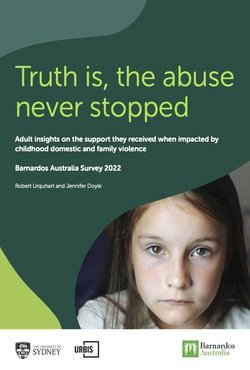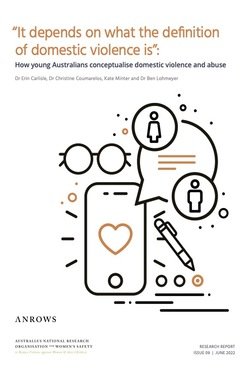By Dinesh Wadiwel, Claire Spivakovsky, Linda Steele
This report understands a complaint mechanism as a procedure within an organisation, institution or governing authority which allows individuals to report negative experiences and problematic conduct and policy; seek individual rectification; and, where appropriate, trigger system change. Additionally, in this report, the term ‘complaint mechanism’ can refer to the diverse range of public bodies and agencies that are made responsible for handling complaints, which includes various commissions, ombuds, government departments and bespoke complaint or oversight agencies.
Some people with disability utilise complaint mechanisms to report violence, abuse, neglect and exploitation. As shall be discussed, the use of complaint mechanisms to report such experiences creates a number of unique challenges, including whether existing complaint mechanisms are fit for purpose, whether complaint mechanisms are able to guarantee equality before the law and equal rights to justice for people with disability, how complaint mechanisms relate to other reporting pathways, in particular police and courts, and whether complaint mechanisms are able to protect individuals from violence and create system change to prevent violence. Raising these concerns does not mean that complaint mechanisms may not be appropriate or desired pathways for people with disability who want to report and seek justice for violence, abuse, neglect and exploitation. Indeed, a complaint mechanism may be able to offer forms of just process and justice in outcome that are not available through police and courts. However, much care is required in the design of complaint mechanisms as reporting pathways for violence, abuse, neglect and exploitation to ensure that they are effective in terms of process and outcome, including in achieving a broader goal of violence prevention.
This report provides guidance to the Royal Commission into Violence, Abuse, Neglect and Exploitation of People with Disability (the Disability Royal Commission) on the design of accessible and inclusive complaint mechanisms which function as a reporting pathway for violence, abuse, neglect and exploitation. Our report puts forward an ideal approach to creating accessible and inclusive responses to complaints of violence, abuse, neglect and exploitation of people with disability. The report utilises contemporary understandings of human rights, violence prevention, procedural justice and justice in outcome to identify the principles that should inform the design of complaint mechanisms to optimise their function as reporting pathways for violence, abuse, neglect and exploitation. The report centres lived experiences of people with disability, providing extensive accounts of people navigating complaint mechanisms in relation to violence, abuse, neglect and exploitation. The report further provides a mapping of the Australian complaint mechanism landscape, through a survey of website information, and where appropriate, policy or legislation, identifying some common features and limitations of existing complaint mechanism approaches, particularly in relation to the reporting of violence, abuse, neglect and exploitation.
Our conclusions in brief (explored in detail in Chapter 8) can be summarised as follows:
a) The Structural Drivers of Violence and Complaint Mechanisms. Much of the violence, abuse, neglect and exploitation experienced by people with disability is driven by structural factors, including as a result of segregation and institutionalisation. For a range of reasons, complaint mechanisms, even when designed in accordance with ‘best practice,’ can be poorly equipped to deliver either individual rectification or the large-scale transformational change required to address and prevent violence, abuse, neglect and exploitation.
b) Complaint Mechanisms, Equality before the Law, and Legally Authorised Violence. Many complaint mechanisms are not necessarily equipped to provide justice in relation to violence, abuse, neglect and exploitation. This is because many complaint mechanisms are non-independent and combine regulatory oversight with complaint resolution processes. They are thus potentially established with a policy goal to regulate services and maintain codes of conduct, and not necessarily designed to respond to violence, abuse, neglect and exploitation from a victim-centred and justice-focused perspective. Further, if there is a social or institutional expectation that some people with disability should use complaint mechanisms, rather than police or courts, to report violence, abuse, neglect and / or exploitation, then this potentially undermines equality before the law since this means some people with disability do not have access to the forms of justice that are available to the rest of the community. This problem is further complicated by the existence of legally authorised forms of violence, such as restrictive practices. However, despite these concerns, it is acknowledged that many people with disability utilise complaint mechanisms to report violence, abuse, neglect and exploitation, and that in some cases these pathways may be preferred over the criminal justice system due to the different forms of just process and justice in outcome that they may offer.
c) Improving Process and Outcome. Based upon this report’s survey of website information, and where appropriate, policy or legislation, there are many improvements that can be made to many existing complaint mechanisms at the level of stated process and outcome to enhance their ability to respond to violence, abuse, neglect and exploitation. Improvements can be made through access to and consistency of information; dedicated reporting pathways for violence, abuse, neglect and exploitation; application of accessibility standards and the availability of supported decision making; increased clarity on how complaint mechanisms interact with and complement police and courts; and increased clarity on outcomes available as a result of a complaint, including for system transformation.
d) An Independent Complaint Mechanism for Violence, Abuse, Neglect and Exploitation. While improvements to existing mechanisms are possible, there remains a need for an independent complaint mechanism to respond to violence, abuse, neglect and exploitation, with strong perceived independence, neutrality, transparency, trustworthiness, effectiveness and capacity to support and recognise the voice of complainants. At present, this independent, dedicated, pathway for reporting violence, abuse, neglect and exploitation experienced by people with disability does not appear available within the existing terrain of relevant Australian complaint mechanisms.
e) A National Redress Scheme. Much violence, abuse, neglect and exploitation is historical in nature, including violence, abuse, neglect and exploitation that is supported by legally and socially authorised forms of segregation, institutionalisation and society wide discrimination. There is a pressing need for governments and society to acknowledge the role of historical injustices committed against people with disability in creating the conditions for current mass scale violence. In this context, a National Redress Scheme would serve an important role as both a form of transitional and transformative justice, and as an additional pathway for reporting violence, abuse, neglect and exploitation that is historical in nature.
f) Improved Processes for Police and Courts. While out of scope for this report, improvements in responses of police and courts to violence, abuse, neglect and exploitation experienced by people with disability would work in a complementary way with improvements to complaint mechanism pathways, and ensure equality before the law and equal rights to justice for people with disability.
Australia: Royal Commission into Violence, Abuse, Neglect and Exploitation of People with Disability, 2022. 534p.













